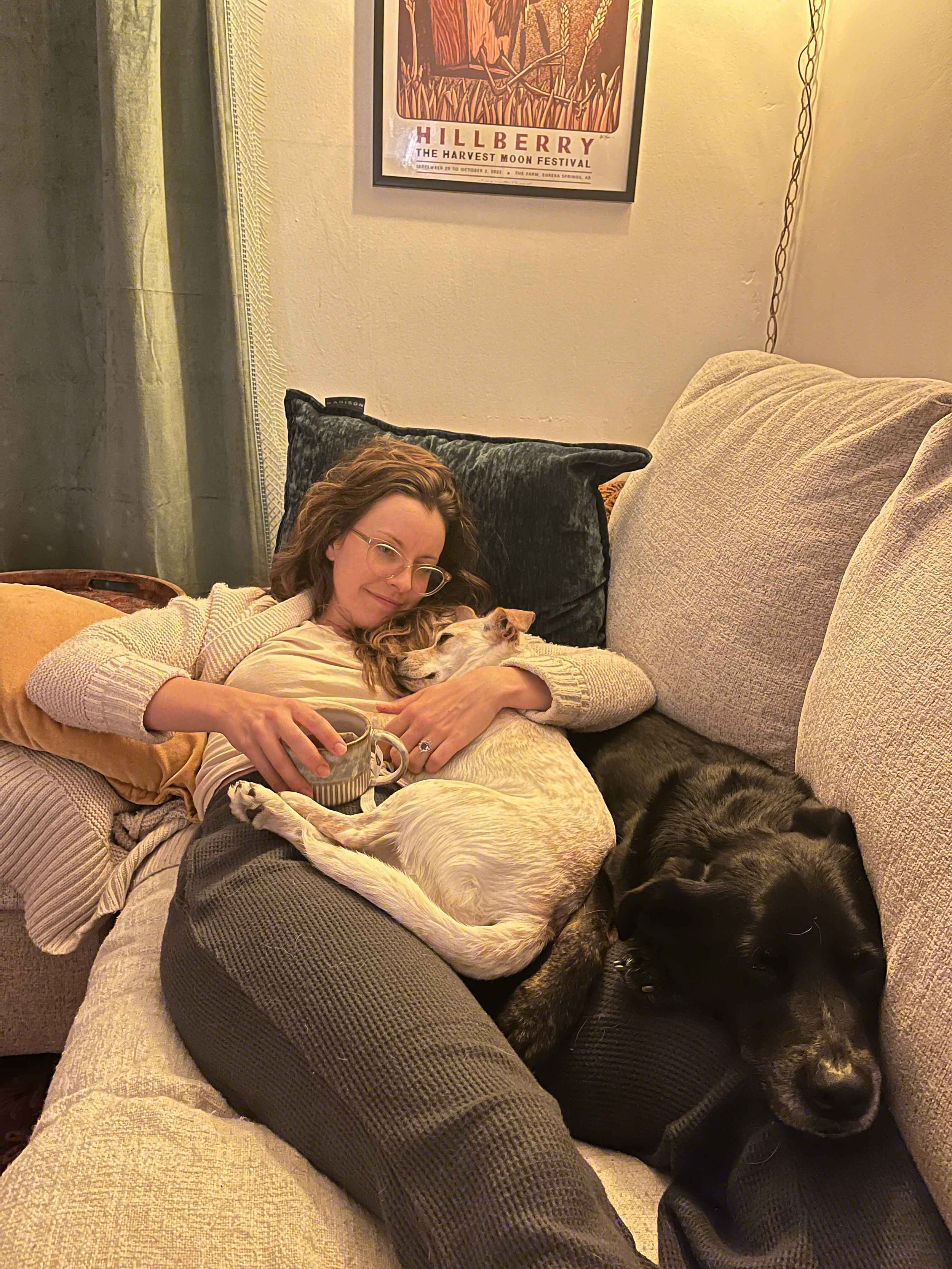The Hardest Season
It’s been three months since my sister fell from the top of a waterfall, shattering her hip, and two months since Hurricane Helene devastated my small town in Western North Carolina.
This has been the hardest season of my life—an unrelenting stretch of survival mode, with my nervous system on overdrive. Every day has been about taking the next step to ensure my loved ones—and myself—have our most basic needs met. It’s been physically, mentally, and emotionally exhausting, but it’s also shown me just how deep my resilience runs.
Some days, I still see her falling, crashing onto the rocks below. It’s a memory that will never fade. Those first days after the accident, when my husband and I stepped in to care for her children, are etched into my heart forever.
The good news, though, is that my sister is walking again—just three months after the accident. Her strength and determination are nothing short of inspiring, and we couldn’t be prouder of her warrior spirit. If you’d like to learn more about her journey, you can read her story in her own words here on GoFundMe.
About a month after her accident—and with a brief but joyful Italian adventure in between—Hurricane Helene came barreling through the Blue Ridge Mountains, leaving destruction in its wake.
Our home was mostly spared, with only minor damage, though the wreckage I now drive by every day is a constant reminder of the storm’s force. Just a half-mile in either direction from my house, the devastation was catastrophic. A river that typically flows just an inch or two deep surged to 27 inches, swallowing homes and tearing down everything in its path. Mudslides, micro-tornados, downed trees, and washed-out roads turned the landscape into an unrecognizable mess. The storm took out power, water, cell service, and internet, and we didn’t know the full extent of the damage until we were able to make a call the next day to our family, letting them know we were safe. We were worried about our friends who lived near a creek until they showed up on our doorstep to tell us their home was gone—consumed by the floodwaters.
We left for a week, trying to comprehend the scale of what had happened. When we returned, it felt like the only place I wanted to be. Helping felt better than watching from afar. We gathered resources for the community and then dove into the work of recovery.
Two months later, our home is back to normal—we finally have potable water and all of our utilities restored. Many businesses and services have reopened, and the little sanctuary I live in is functional again.
What has stood out most during this time, though, is the strength of the community. Neighbors came together in ways that were deeply moving—people from all walks of life, regardless of background or political views, united to help one another. Free meals are still being served, and community care stations have become lifelines for those who lost everything.
As we shift from relief to recovery, there are moments of hope. Still, the grief is a constant companion. It’s not just the homes that were lost, but the trails, the coffee shops, the roads we loved to drive, and the landmarks that defined the place we call home. Many of my favorite spots in these mountains are gone—forever changed, or simply no longer there.
For the past decade, I’ve been a person of transience, always on the move. But I had finally put down roots here, in the Swannanoa Valley. Nestled just east of Asheville, this place has always felt like home—the mountains rise around us, forming a bowl of peaks that wrap us in their embrace.
I used to believe that places never really change. That even if you leave, you can always go back to the same spot, the same feeling. But in the age of climate change and extreme weather, I was wrong.
This valley I love has changed. A lot. In just 24 hours, it was transformed, and I never imagined my town would be the one making the headlines. I brace my heart every time I drive by neighborhoods completely wiped out, homes submerged by floodwaters, and the land reshaped beyond recognition.
It’s seven weeks later, and I find myself wondering: who will rebuild this? Will I ever be able to take that road again? What will this town look like when it rises from the ashes? Will all the debris wrapped along the side of the river ever be removed?
I go to the places I once loved to see how they’ve changed. It’s raw and tender, a landscape that can never be the same again. Sitting there, Mother Earth reminds me that she will heal—she’s been doing this for millennia. I am but a single drop in her vast ocean. It’s humbling. The grief I feel for these places is deep, but it’s also a reminder that nature endures.
When people ask how I’m doing these days, I tell them I’m “soupy”—a blend of constantly shifting emotions. There are moments of joy, gratitude, and hope, but also grief, frustration, and tenderness. Every day brings a new inner landscape to navigate.
This season has taught me so much. I’ve grown in ways I never could have anticipated. One of the biggest lessons that’s been brought to a new light is that you never really know what someone else is going through. We all carry our own stories of hardship, loss, and heartbreak. That’s why it’s so important to move through the world with kindness—whether it’s sharing a smile, or pausing long enough to ask someone how they really are.
Those small acts make a difference, and they go a long way.






